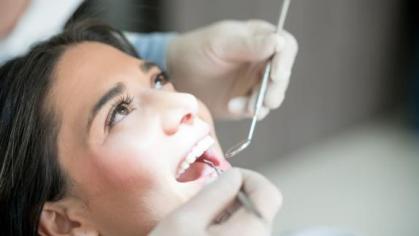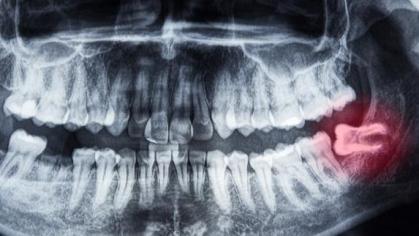Dental Conditions That May Require Oral Radiology
Your dentist can identify cavities, periodontitis, and other issues affecting your teeth and mouth with the visual exam they perform at regular checkups. Yet in some cases, damage and disease hide out of sight. If left undetected, these problems can escalate quickly, causing pain, loss of function, and tooth loss.
To address dental problems before they become serious, the dentists at Rutgers Health University Dental Associates rely on oral radiology, or X-ray imaging. This imaging technology provides a view beneath the gums and inside the teeth and bone to support early detection and effective treatment. Here, we’ll take a closer look at common dental conditions for X-ray diagnosis.
Explaining Oral Radiology
Most dental offices take X-ray images to keep careful track of any changes in your dental health. The frequency varies from person to person and is decided by your dentist on an individualized basis. Your dentist will determine when radiographs are indicated based on your age, oral health history, and any ongoing complications.
At times, however, your dentist may take radiographs to help diagnose underlying conditions. This may happen because of something they notice during an exam or due to symptoms you report, such as soreness, sharp pain, or bleeding.
The X-ray will often help identify the cause of the problem before it becomes visible to the naked eye, allowing earlier treatment and a potentially better outcome. Modern x-ray equipment is used to enhance safety, and your dentist will take precautions to shield you from the radiation used to create these images.
Conditions X-Rays Detect
Oral radiology can be used to detect a wide variety of conditions and symptoms, including:
- Tooth decay: Radiology can identify decay between teeth or in and around fillings that would remain invisible until it spreads.
- Bone loss related to infection or gum disease: Without treatment, periodontitis can damage bone tissue, causing loose teeth or even tooth loss.
- Abscesses: These infections occur at the root of the tooth, causing swelling and discomfort. Eventually, the infection can spread to the jaw and nearby tissues.
- Overbites and underbites: X-rays can help dentists better understand the misalignment of teeth to aid in correction.
- Cysts and tumors: These growths can cause damage to the teeth and supporting bone and may require oral surgery to remove.
X-rays can also be used to examine your jaw structure and tooth placement to plan for implants, braces, dentures, and other dental procedures. With X-ray imaging, dentists and oral surgeons can form more detailed plans with a higher chance of success without complication.
Oral Radiology for Children
Dentists use X-rays to monitor the oral health of pediatric patients as well. Dental X-rays for children can help identify unseen decay, monitor the loss of baby teeth and the space available for new teeth, and check for abnormalities. As children grow older, dentists can also observe the growth of wisdom teeth and determine if removal is needed.
Monitoring children’s dental development in this way helps address alignment issues as soon as possible. Early intervention helps reduce the need for more aggressive treatments and sets children on a lifelong path of good oral health and hygiene.
Ask Your Dentist about Oral Radiology
If you’re experiencing discomfort, swelling, or other symptoms, schedule an appointment with Rutgers Health University Dental Associates today. Our patients are seen by Rutgers School of Dental Medicine faculty, never students, who can identify underlying problems with oral radiology and other diagnostic techniques. To learn more, contact us in Newark, New Jersey, by calling 973-972-2444, or call 732-235-5050 to speak with our New Brunswick office.



